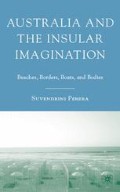Abstract
This chapter on Australia’s responses to the Indian Ocean tsunami of 2004 takes its title from Alain Corbin’s discussion of the aesthetic and affective topicality of the shipwreck in eighteenth-century Europe. Corbin’s The Lure of the Sea is a profound—and provoking—investigation of the emergence of “a type of pleasure” in the sea and the ways in which the “unconscious desires and obsolete emotions” of European publics came to be performed on the “coastal stage” from the mid-eighteenth century.1
The response of Australians to this disaster has just been so overwhelming and, so generous and so decent and so good that it makes you very proud indeed to be an Australian.
—John Howard, Prime Minister of Australia, January 6, 2005
Access this chapter
Tax calculation will be finalised at checkout
Purchases are for personal use only
Preview
Unable to display preview. Download preview PDF.
Notes
Corbin, The Lure of the Sea: The Discovery of the Seaside in the Western World 1750–1840, trans. Jocelyn Phelps (1988; repr., London: Penguin, 1994), 282.
See Suvendrini Perera and Joseph Pugliese, “Parks, Mines and Tidy Towns: ‘Post’Colonialism, Enviro-Panopticism and the Politics of Heritage in Australia,” Journal of Postcolonial Studies 1, no. 1 (1998), 84,
citing Martin Heidegger, The Question Concerning Technology and Other Essays, trans. William Lovitt (New York: Harper Torchbooks, 1977), 131, 150.
On the “wall of screens,” see Maurizia Natali, “The Course of Empire: Sublime Landscapes in the American Cinema,” in Landscape and Cinema, ed. Martin Lefebvre (New York: Routledge, 2006), 100–101.
Achille Mbembe, “Necropolitics,” trans. L. Meintjes, Public Culture 15, no. 1 (2003), 39.
Susan Nieman, Evil in Modern Thought (New Jersey: Princeton University Press, 2002), 240–42.
Gene Ray, “Reading the Lisbon Earthquake: Adorno, Lyotard, and the Contemporary Sublime,” The Tale Journal of Criticism 17, no. 1 (2004): 1–18.
See Kris Olds, James Sidaway, and Matthew Sparke, “White Death,” Environment and Planning D 23 (2005): 475–79.
Giorgio Agamben, Homo Sacer Sovereign Power and Bare Life, trans. Daniel Heller-Roazen (Stanford: Stanford University Press, 1998).
Joseph Pugliese, “Indigeneity and the Racial Topography of Kant’s ‘Analytic of the Sublime,’” in Indigeneity: Construction and Re/Presentation, ed. James N. Brown and Patricia M. Sant (Commack, NY: Nova Science, 1999), 27.
Meaghan Morris, “White Panic or Mad Max and the Sublime,” in Trajectories: Inter-Asia Cultural Studies, ed. Kuan-Hsing Chen (London: Routledge, 1998), 242.
Gregory Bankoff, “Rendering the World Unsafe: ‘Vulnerability’ as Western Discourse,” Disasters 25, no. 1 (2002), 29.
Harlan K Ullman and James P. Wade, Shock and Awe: Achieving Rapid Dominance (Washington, DC: National Defense University Press, 1996), 110, http://www.dodccrp.org/files/Ullman_Shock.pdf
Malini Johar Schueller, “Techno-Dominance and Torturegate: The Making of US Imperialism,” in Exceptional State: Contemporary US Culture and the New Imperialism, ed. Ashley Dawson and Malini Johar Schueller (Durham: Duke University Press, 2007), 167, 169.
Naomi Klein, The Shock Doctrine (Camberwell, Vic: Allen Lane, 2007), 388.
Ibid., 246. On Australia and Asia see also Foong Ling Kong, “Postcards from a Yellow Lady,” in Asian and Pacific Inscriptions: Identities/Ethnicities/Nationalities, ed. Suvendrini Perera (Melbourne: Meridian, 1995), 83–97;
Suvendrini Perera, “Representation Wars: Embassy, Malaysia and Australia’s Corps Diplomatique” in Australian Cultural Studies: A Reader, ed. Meaghan Morris and John Frow (Sydney: Allen & Unwin, 1993), 15–30.
See Slavoj Žižek, Welcome to the Desert of the Real: Five Essays on September 11 and Related Dates (London: Verso, 2002).
Patricia Lawrence, “Violence, Suffering, Amman: The Work of Oracles in Sri Lanka’s Eastern War Zone,” in Violence and Subjectivity, ed. Veena Das, Arthur Kleinman, Mamphela Ramphele, and Patricia Reynolds (Berkeley: University of California Press, 2000), 188.
Copyright information
© 2009 Suvendrini Perera
About this chapter
Cite this chapter
Perera, S. (2009). Torturous Dialogues. In: Australia and the Insular Imagination. Palgrave Macmillan, New York. https://doi.org/10.1057/9780230103122_5
Download citation
DOI: https://doi.org/10.1057/9780230103122_5
Publisher Name: Palgrave Macmillan, New York
Print ISBN: 978-1-349-37814-2
Online ISBN: 978-0-230-10312-2
eBook Packages: Palgrave Political & Intern. Studies CollectionPolitical Science and International Studies (R0)

